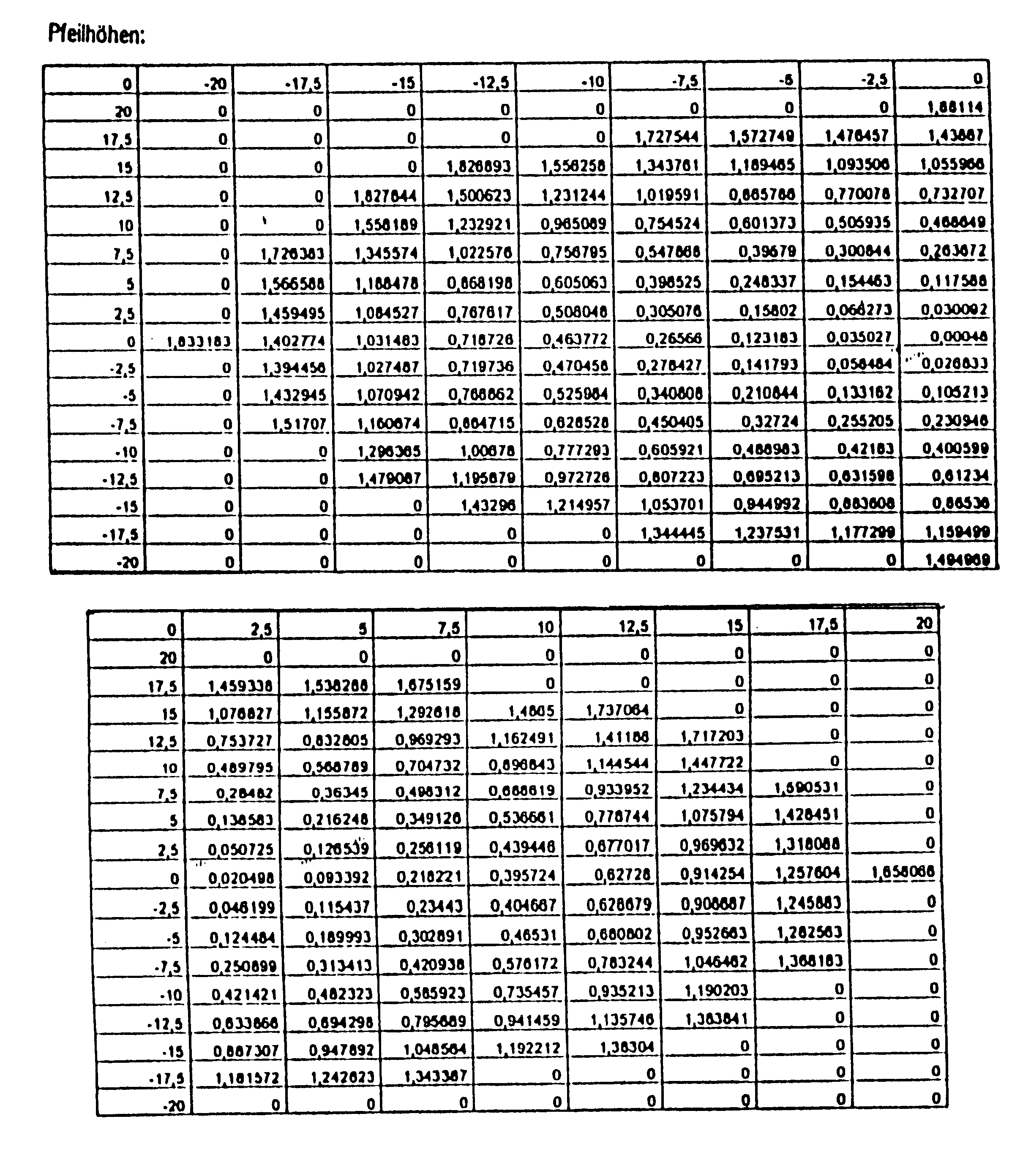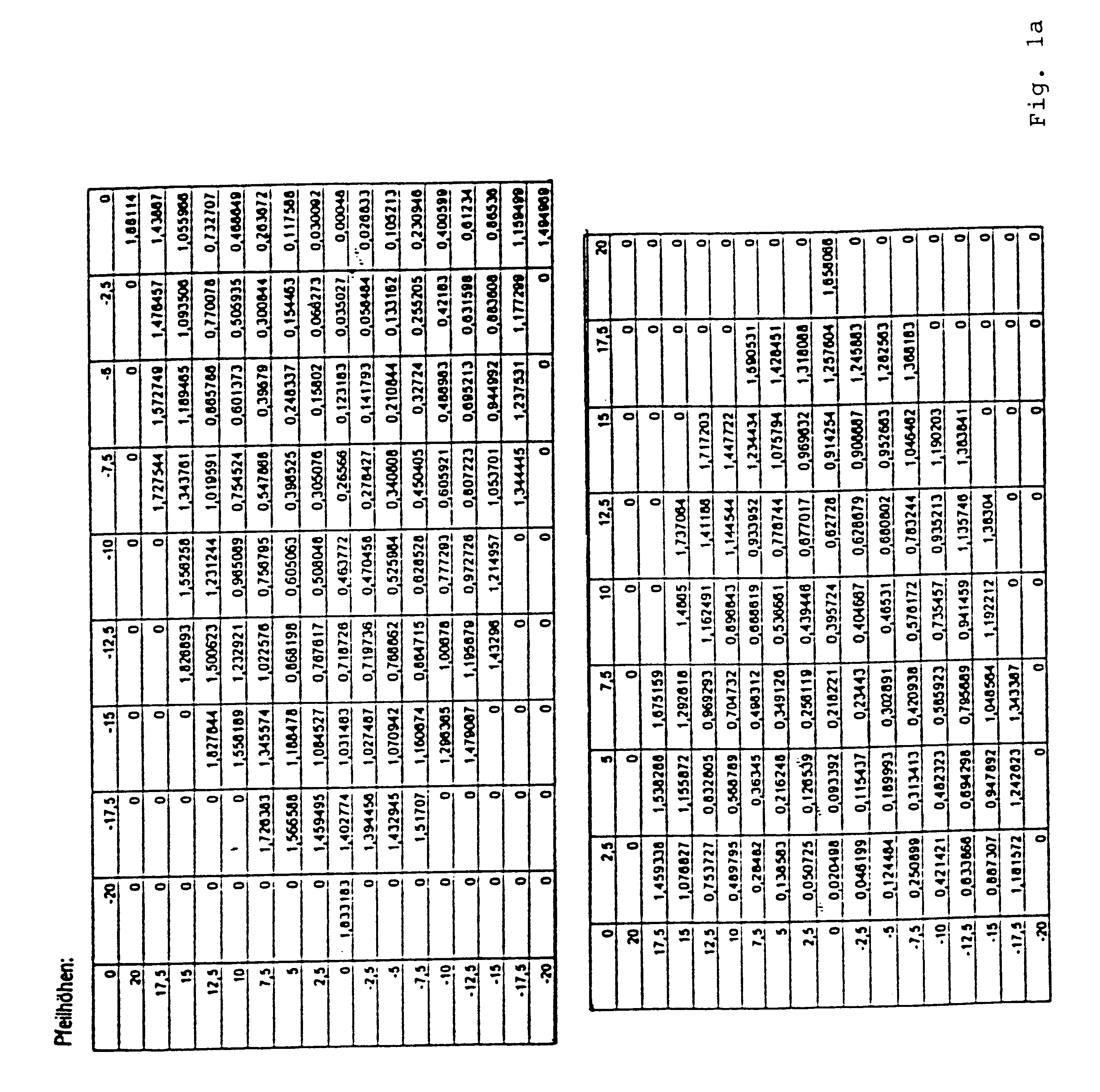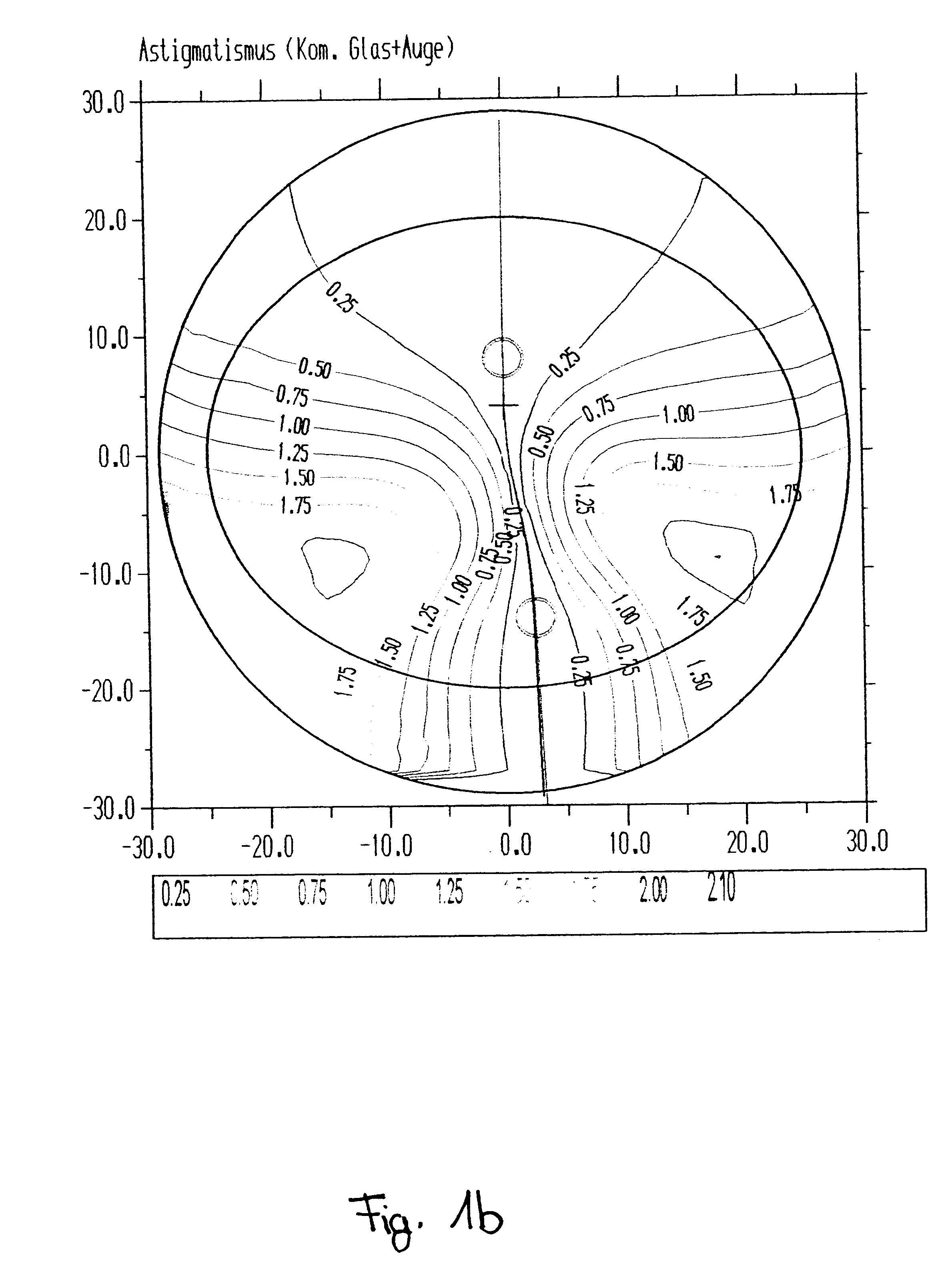Method for producing eyeglasses
a production method and eyeglass technology, applied in the field of eyeglass production methods, can solve problems such as trouble for the wearer of continuous vision lenses
- Summary
- Abstract
- Description
- Claims
- Application Information
AI Technical Summary
Benefits of technology
Problems solved by technology
Method used
Image
Examples
Embodiment Construction
In all four illustrated embodiments the progressive surface is the surface on the side of the eyes, without any restriction of the general applicability. The face area is a spherical or toric surface.
All four embodiments share the common aspect that they produce a spherical effect (mean value in use) of -1 dpt and an addition of 2 dpt in the point of reference in the distant vision range. An astigmatism prescription does not exist. In all figures the abscissa (x-axis) corresponds to the horizontal axis while the ordinate (y-axis) corresponds to the vertical axis in the position of use.
The reference points in the distant and near vision ranges are illustrated by respective circles in the corresponding Figures b to e whilst the cross marks the centering point and their position can be seen in the respective figures. Moreover, the course of the principal line, which has been determined in correspondence with the present invention, is drawn in the figures.
The sub-figures (a) illustrate ...
PUM
 Login to View More
Login to View More Abstract
Description
Claims
Application Information
 Login to View More
Login to View More - R&D
- Intellectual Property
- Life Sciences
- Materials
- Tech Scout
- Unparalleled Data Quality
- Higher Quality Content
- 60% Fewer Hallucinations
Browse by: Latest US Patents, China's latest patents, Technical Efficacy Thesaurus, Application Domain, Technology Topic, Popular Technical Reports.
© 2025 PatSnap. All rights reserved.Legal|Privacy policy|Modern Slavery Act Transparency Statement|Sitemap|About US| Contact US: help@patsnap.com



